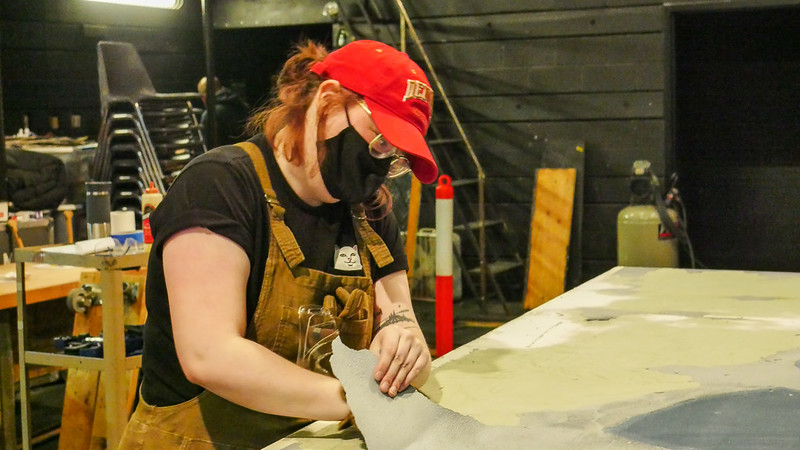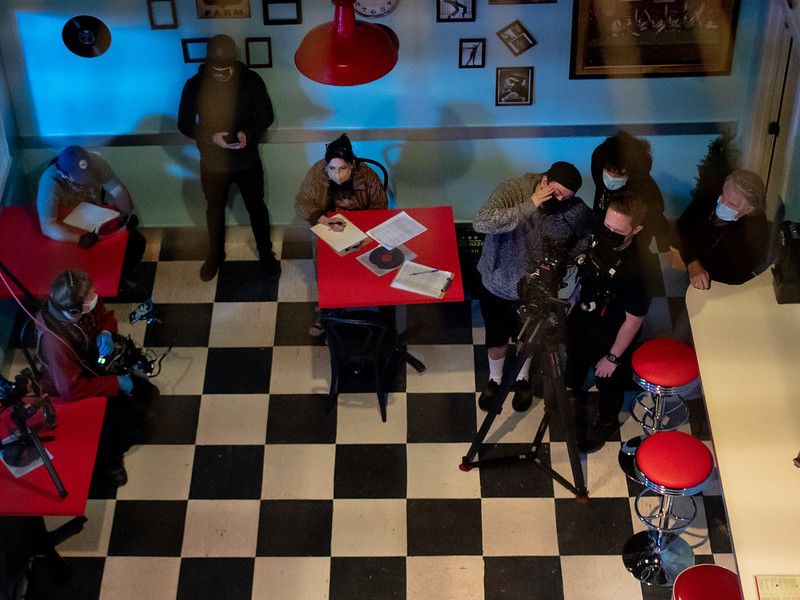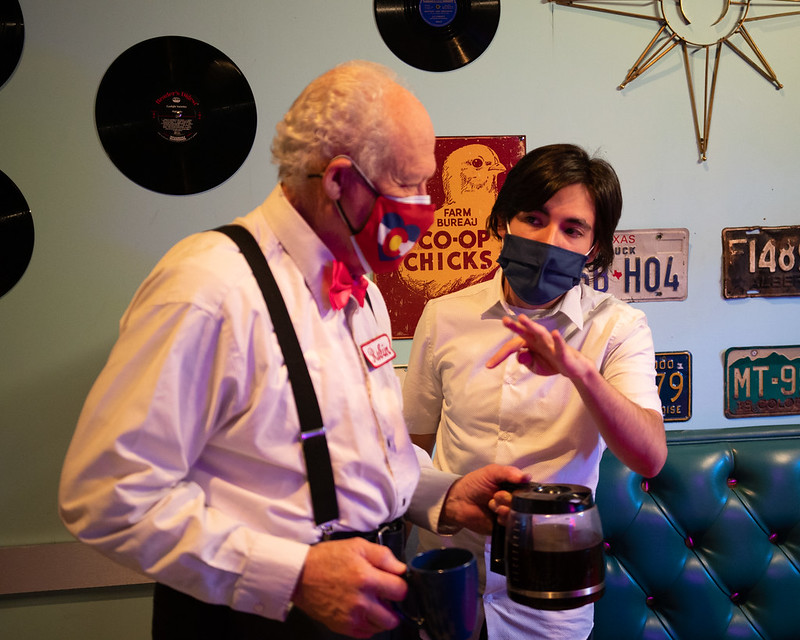Hard Work Rewarded: Students' Web Series Project Wins Telly Award for Set Design
The “web series project”—the only of its kind among U.S. art schools—gives students hands-on experience creating an episodic film series from start to finish.





Juniors in the Film & Television (FTV) program at the University of Colorado Denver’s College of Arts & Media (CAM) experience the mother of all group projects when they take Writing for Episodic TV in the fall followed by Producing for Episodic TV in the spring. The “web series project”—the only of its kind among U.S. art schools—gives students hands-on experience creating an episodic film series from start to finish.
The group aspect of the project serves many purposes, perhaps the most important of which is mimicking the real-life scenarios of film production which often involve big and diverse crews executing hundreds of interdependent tasks. As Professor Jessica McGaugh, who originally came up with the project idea, says, “In the professional world you don’t always get to pick your teams.”
Each year starting in 2010, faculty members (which included, up until this year, Professor Craig Volk who taught Writing for Episodic Television and who, McGaugh says, was instrumental in the launch of the project) in CAM’s Film & Television Studies (FTV) program have worked with students to produce an original series all the way from conception to screening. Some of these creations have been entered into film festivals and have won awards. “Booth by the Window” was last year’s web series project, wrapped up at the end of spring 2021 semester. The series won a silver Telly award for set design and is currently making its rounds through various film festivals. In 2013, the student-produced series “Mortal Coil” took third place for the Student Film Emmys.
“Booth by the Window” falls into the magical-realism genre and represents “a drama in the vein of ‘Twin Peaks’ with the ominous whimsy of ‘Welcome to Nightvale,’” as described by Film Freeway. The six-episode series follows six unrelated characters who unassumingly enter a diner staffed by a waiter named Robin (played by different actors in each episode). As each episode unfolds, Robin helps the visitor face whatever problem they are attempting to avoid.
The Project: Fall to Spring
The project kicks off in the fall in Screenwriting class (taught this year by Professor Roma Sur). Students (usually between 50-70) are tasked with writing a pilot episode for a film series and then spend the rest of the semester tweaking their own scripts and writing episodes based on their classmates’ pilots. At the beginning of the spring semester, students and faculty vote on which series idea and which scripts to bring to fruition. Then, each student is given a production and post-production role. Production roles, for instance, range from the more recognizable director position to the less-visible second camera assistant. Post-production roles include sound editor and post-production supervisor, among others.
To put it mildly, there is a LOT that goes on behind the scenes of any film (literally), and episodic television presents its own unique set of challenges.
For instance, building a set may seem like a pretty straightforward task, but the expertise required to build one can be quite expansive. Professor Nathan Thompson, who oversaw the art department for the project, rattled off some of the skills utilized in set building: Geometry, drafting, construction, aesthetic sensitivity. The “Booth by the Window” set also required some basic plumbing knowledge, electrical wiring, and rigging. Thompson estimates he and his crew of eight students spent about 1,500 labor hours building the set last year.
Preparation for a Future in Film
Then there is the coordination among all the students involved in the script-writing for each episode, the directors, the camera crew, etc. to create a cohesive series. With so many hands on the project, it can get a little tricky. Suddenly the role a student chooses to fill in the project may seem more like a chore than a dream job. That, says Professor Tom Kolicko, is exactly the point. One of the main goals of the project is to help students determine if a career in the film and television industry is something they’d like to pursue.
Despite the hard work and long hours, though, a lot of students walk away from the project with the film-making “bug.”
Student Santiago Jimenez directed the first episode of “Booth by the Window” and says the project solidified his interest in directing. “It gave me insight into how a real episodic series works and how a director would chime in,” he says.
Student Ellie Graphman worked on the award-winning set alongside Professor Thompson. Despite logging 10+ hour days, six days a week for a couple months while they were building the set (in addition to juggling other classes), Graphman said the experience opened doors for her. The project “specialized me,” Graphman says, adding, “now I’m the person people come to to ask ‘Hey, we want to build this. Hey, we want to do this.’ I’ve proven that I can do this and I like doing it and it’s fun and now I do it professionally.” In addition to building sets for theaters, Graphman had a hand in the production design of the newly opened Meow Wolf Denver.
Even if students don’t want to go into fiction with filmmaking, the skills they learn in these two semesters of hands-on filmmaking translate to other genres. Makayla O’Malley says the project taught her skills that have come in handy with her job with Janome, a sewing machine company. O’Malley builds the company’s event videos and says her role in web series (director of episode 4) taught her “how to wrangle 25 people,” and that she “got promoted a lot quicker” because of it. O’Malley hopes to continue in the commercial video world after graduating from CU Denver.
Amadeus Bennett, who aspires to work in cinematography in nonfiction, post production, and editing, says the roles he played during the project as director of photography and B camera on episodes 3 and 6, says he believes the “classic, fundamental style of shooting television” will represent vital experience on his resume.
For the faculty involved, the web series project represents a massive time commitment. And while that may be typical of other projects utilized by different disciplines of academia, faculty and students in FTV end up forming what feels like a unique bond while working on the web series. “Filmmaking is quite intimate. You are physically and emotionally in close proximity [while making a film]” Prof. McGaugh explains.
Perhaps that’s why the web series project has become a cornerstone of FTV’s program and why so many students have benefited from the experience.
Written by Megan Briggs-Pintel, CAM Communications
(1/7)
(2/7)
(3/7)
(4/7)
(5/7)
(6/7)
(7/7)